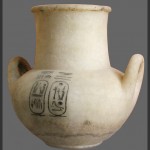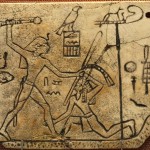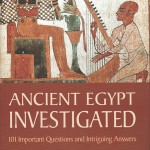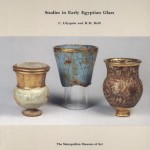Edition - December, 2013

4th December 2013 – The latest news from Egyptological
Today we published the 6th edition of the Journal and the 9th edition of the Magazine, after a tough year following the professional attack on the site by hackers in 2012. You can find our latest Editorial on the site, which summarizes the latest content. We do hope you enjoy it. As most of our […] [more…]

Editorial – Journal Edition 7 and Magazine Edition 9
A very warm welcome to the new edition of Egyptological. After a rocky few months following the damage that professional hackers inflicted on Egyptological, we have moved the site to a new host and are very pleased to be back. This is our first new edition since April, so we are delighted to be able […] [more…]

Vernacular Voices II: Ptolemaios, Phatres and Eirenais – Three Romano-Egyptians in Wadi Qash
Janet Robinson’s project Vernacular Voices is about ancient people living, travelling and most importantly communicating in writing in the Egyptian desert. Vernacular Voices I, published on Egyptological in May 2012 (http://egyptological.com/2012/05/31/vernacular-voices-8902), introduced a Romano-Egyptian called Phopis resting in a shady spot at Hans Winkler’s site RME21 (Robert Mond Expedition) in Wadi Qash. Vernacular Voices II discusses some hitherto unpublished graffiti signatures set in full sun at the celebrated ‘lost’ Hans Winkler rock-shelter RME18 which is also in Wadi Qash near the Roman garrisons of Krokodilo and Didymoi. [more…]

The Origin and Early Development of the Smiting Scene
The depiction of the king with mace raised above a helpless prisoner is one of the most prominent and enduring images of ancient Egypt. Although it has often been claimed that the origin for this iconic image lies in the Predynastic Era, this is unlikely. Not until the Narmer Palette do we see a possible model for dynastic developments of the image. These developments are traced here within the Early Dynastic Period [more…]

The Significance of the Crossed Arms Pose – Part 2: Osiris, The Osiris and the Osirides
Is it a futile activity to ask, as I do in this series of articles, “What is The Significance of the Crossed-Arm Pose?” It might be argued, for instance, that variations in the pose at death exhibited by royal mummies simply reflect what embalmers decided to do on the day, or at least the customary practice of a particular undertaker. Similarly, it might be argued that each individual anthropoid coffin might be expected to reveal some unique design characteristic, and that no significance should be attached to the specific hand/arm pose depicted on the lid. [more…]

Marianne Brocklehurst and the West Park Museum, Macclesfield. Part 2
In part 1 I looked at how Marianne Brocklehurst acquired a collection of some 500 Ancient Egyptian objects during the three trips to Egypt that she records in her diary, cartoons, sketches and watercolours. In this section I look at the museum and the collection that Marianne and her brother Francis built for the benefit of the residents of Macclesfield in northwest England. [more…]

Book Review: Wadi Sura – The Cave of Beasts
The name “Cave of Beasts” comes from the strange headless creatures, an example of which can be seen on the cover of the book to the left. It comprises an estimated 8000 images over an area of some 120 square metres on the northeastern edges of the vast Gilf Kebir plateau. The book is edited by the much-published and respected archaeologist Rudolph Kuper, one of the major contributors to the archaeology of the area. [more…]

Book Review: Ancient Egypt Investigated. 101 Important Questions and Intriguing Answers
At first glance, this is a curious concept and is distinctive, when compared to other popular titles, due to its unusual premise – that ancient Egypt can be explored by asking questions rather than via chronological narrative or thematic chapters. The questions that Schneider asks are intended, the fly-leaf explains, to assist in the author’s attempts to move away from the familiar ideas perpetuated by coffee table books, art exhibitions and spectacular discoveries, towards a more modern view of Egypt that dispels “myths and inaccuracies.” [more…]
 By Andrea
By Andrea